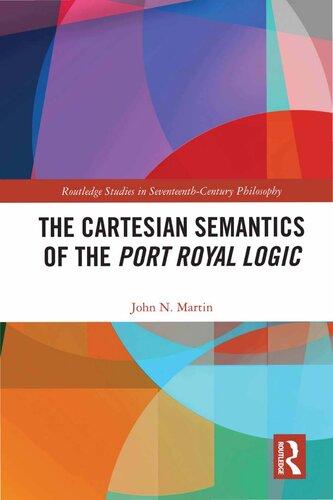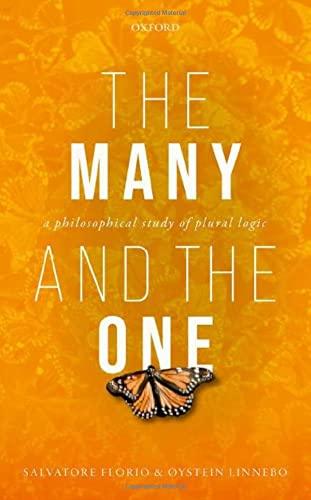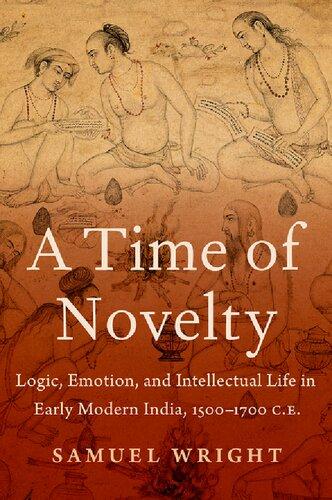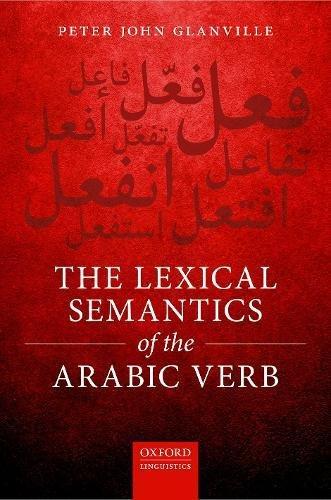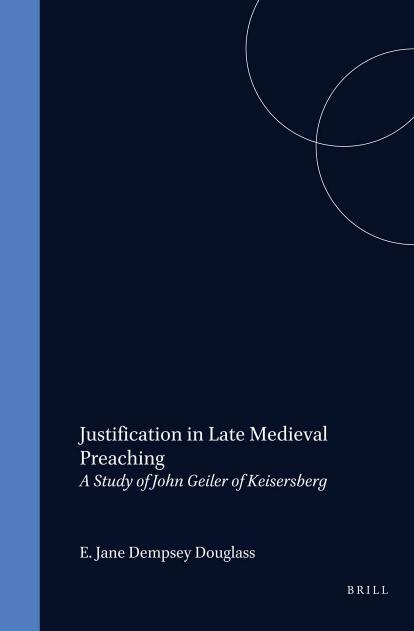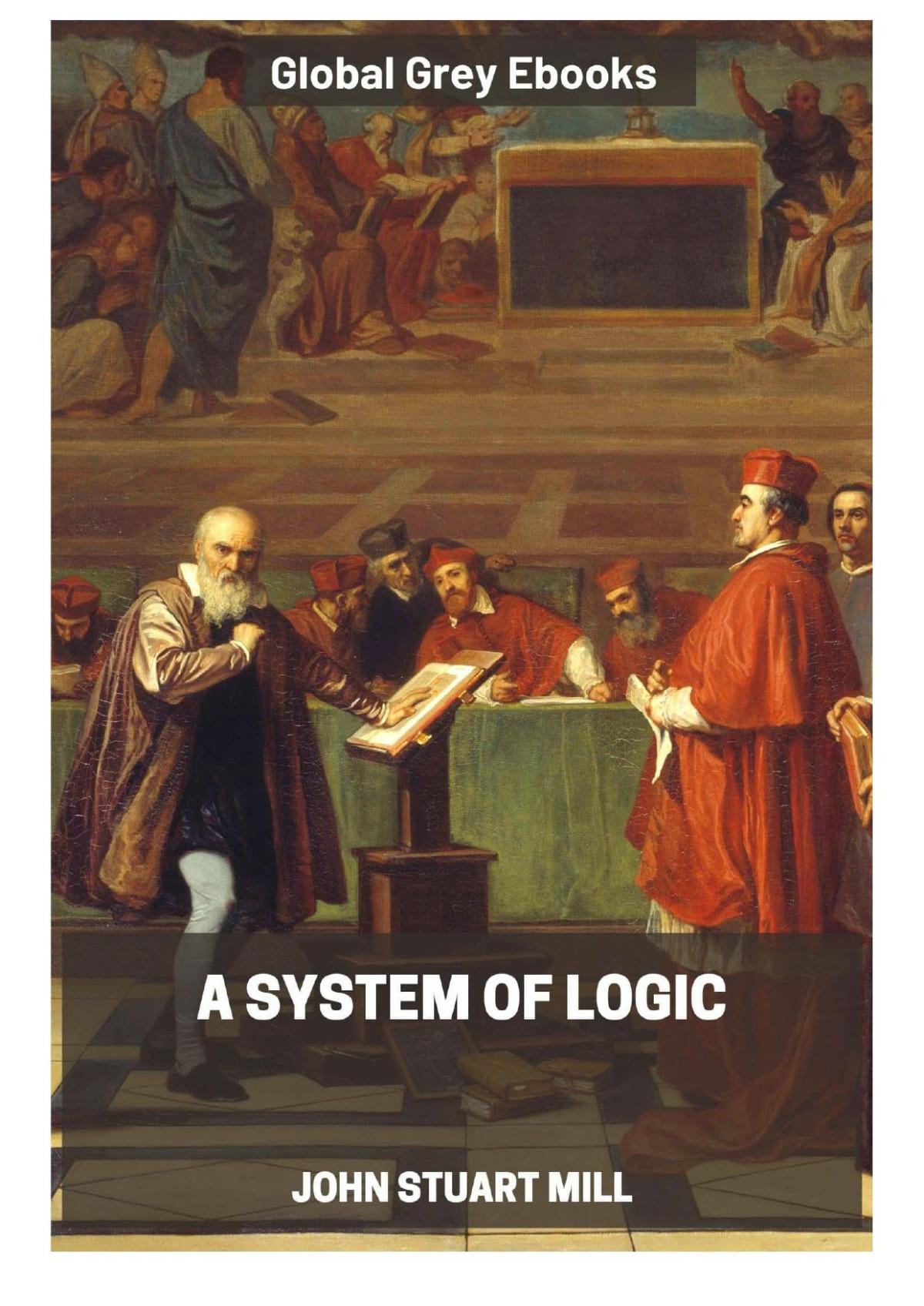The Modal Logic of John Fabri of Valenciennes (c. 1500): A Study in
Token-Based Semantics Christophe Geudens Visit to download the full and correct content document: https://ebookmass.com/product/the-modal-logic-of-john-fabri-of-valenciennes-c-1500a-study-in-token-based-semantics-christophe-geudens/
More products digital (pdf, epub, mobi) instant download maybe you interests ...
The Cartesian Semantics of the Port Royal Logic John N.
Martin
https://ebookmass.com/product/the-cartesian-semantics-of-theport-royal-logic-john-n-martin/
The Cartesian Semantics of the Port Royal Logic John N.
Martin
https://ebookmass.com/product/the-cartesian-semantics-of-theport-royal-logic-john-n-martin-2/
The Many and the One: A Philosophical Study of Plural Logic Salvatore Florio
https://ebookmass.com/product/the-many-and-the-one-aphilosophical-study-of-plural-logic-salvatore-florio/
A Time of Novelty: Logic, Emotion, and Intellectual Life in Early Modern India, 1500–1700 C.E. Samuel Wright
https://ebookmass.com/product/a-time-of-novelty-logic-emotionand-intellectual-life-in-early-modern-india-1500-1700-c-e-samuelwright/
The Lexical Semantics of the Arabic Verb Peter John
Glanville
https://ebookmass.com/product/the-lexical-semantics-of-thearabic-verb-peter-john-glanville/
Justification in Late Medieval Preaching: A Study of John Geiler of Keisersberg Rcds
https://ebookmass.com/product/justification-in-late-medievalpreaching-a-study-of-john-geiler-of-keisersberg-rcds/
The material logic of John St. Thomas : basic treatises
John Of St. Thomas
https://ebookmass.com/product/the-material-logic-of-john-stthomas-basic-treatises-john-of-st-thomas/
A System of Logic, Ratiocinative and Inductive John
Stuart Mill
https://ebookmass.com/product/a-system-of-logic-ratiocinativeand-inductive-john-stuart-mill/
John Venn : A Life in Logic Lukas M. Verburgt
https://ebookmass.com/product/john-venn-a-life-in-logic-lukas-mverburgt/
SpringerBriefs in Philosophy
Christophe Geudens · Lorenz Demey
The Modal Logic of John Fabri of Valenciennes (c. 1500) A Study in Token-Based Semantics SpringerBriefsinPhilosophy SpringerBriefspresentconcisesummariesofcutting-edgeresearchandpractical applicationsacrossawidespectrumof fields.Featuringcompactvolumesof50to 125pages,theseriescoversarangeofcontentfromprofessionaltoacademic. Typicaltopicsmightinclude:
• Atimelyreportofstate-of-theartanalyticaltechniques
• Abridgebetweennewresearchresults,aspublishedinjournalarticles,anda contextualliteraturereview
• Asnapshotofahotoremergingtopic
• Anin-depthcasestudyorclinicalexample
• Apresentationofcoreconceptsthatstudentsmustunderstandinordertomake independentcontributions
SpringerBriefsinPhilosophycoverabroadrangeofphilosophical fieldsincluding:PhilosophyofScience,Logic,Non-WesternThinkingandWesternPhilosophy. Wealsoconsiderbiographies,fullorpartial,ofkeythinkersandpioneers.
SpringerBriefsarecharacterizedbyfast,globalelectronicdissemination,standard publishingcontracts,standardizedmanuscriptpreparationandformattingguidelines,andexpeditedproductionschedules.BothsolicitedandunsolicitedmanuscriptsareconsideredforpublicationintheSpringerBriefsinPhilosophyseries. PotentialauthorsarewarmlyinvitedtocompleteandsubmittheBriefsAuthor Proposalform.Allprojectswillbesubmittedtoeditorialreviewbyexternal advisors.
SpringerBriefsarecharacterizedbyexpeditedproductionscheduleswiththeaim forpublication8to12weeksafteracceptanceandfast,globalelectronicdisseminationthroughouronlineplatformSpringerLink.Thestandardconciseauthor contractsguaranteethat
• anindividualISBNisassignedtoeachmanuscript
• eachmanuscriptiscopyrightedinthenameoftheauthor
• theauthorretainstherighttopostthepre-publicationversiononhis/herwebsite orthatofhis/herinstitution.
Moreinformationaboutthisseriesat https://link.springer.com/bookseries/10082
ChristopheGeudens • LorenzDemey TheModalLogicofJohn FabriofValenciennes (c.1500) AStudyinToken-BasedSemantics ChristopheGeudens FWO/ResearchFoundationFlanders KULeuven – InstituteofPhilosophy Leuven,Belgium
LorenzDemey KULeuven – InstituteofPhilosophy Leuven,Belgium
FondsWetenschappelijkOnderzoek ResearchfundedbyFWO – ResearchFoundationFlanders(grants1160017Nand12U1521N).
ISSN2211-4548ISSN2211-4556(electronic) SpringerBriefsinPhilosophy
ISBN978-3-030-98801-2ISBN978-3-030-98802-9(eBook) https://doi.org/10.1007/978-3-030-98802-9
© TheAuthor(s),underexclusivelicensetoSpringerNatureSwitzerlandAG2022 Thisworkissubjecttocopyright.AllrightsaresolelyandexclusivelylicensedbythePublisher,whether thewholeorpartofthematerialisconcerned,specificallytherightsoftranslation,reprinting,reuseof illustrations,recitation,broadcasting,reproductiononmicrofilmsorinanyotherphysicalway,and transmissionorinformationstorageandretrieval,electronicadaptation,computersoftware,orby similarordissimilarmethodologynowknownorhereafterdeveloped.
Theuseofgeneraldescriptivenames,registerednames,trademarks,servicemarks,etc.inthispublication doesnotimply,evenintheabsenceofaspecificstatement,thatsuchnamesareexemptfromtherelevant protectivelawsandregulationsandthereforefreeforgeneraluse.
Thepublisher,theauthorsandtheeditorsaresafetoassumethattheadviceandinformationinthis bookarebelievedtobetrueandaccurateatthedateofpublication.Neitherthepublishernortheauthorsor theeditorsgiveawarranty,expressedorimplied,withrespecttothematerialcontainedhereinorforany errorsoromissionsthatmayhavebeenmade.Thepublisherremainsneutralwithregardtojurisdictional claimsinpublishedmapsandinstitutionalaffiliations.
ThisSpringerimprintispublishedbytheregisteredcompanySpringerNatureSwitzerlandAG Theregisteredcompanyaddressis:Gewerbestrasse11,6330Cham,Switzerland
3Fabri’sLogicofCompositeModals
4Model-TheoreticReconstructionofFabri’sLogic
5Fabri’sLogicofCompositeModalsinitsHistoricalContext
6Fabri’sLogicofDividedModals
7Fabri’
Appendices ...............................................93
AppendixI:TranscriptionofFabri’sQuestionson Deint. 12-13 ......93
AppendixII:FormalProofs.................................107
Chapter1 Introduction Abstract Thisbookisastudyofapproachestomodallogicattheeveofthe NorthernRenaissance.Atthispointintime,thelogicaldiscourseinNorthernEurope wasorganizedaroundtheso-called Wegestreit,thedichotomybetween viaantiqua (traditionalism)and viamoderna (modernism).Pastresearchon Wegestreit logichas mainlyfocusedonissuesrelatedtocategoricallogicandontology.Ifandhowthe discourseonmodallogicwasshapedbythetraditionalism-modernismsplitisstillan openquestion,andthisbookconstitutesthe firstattemptatananswer.Itcontainsa casestudyofthemodallogicofthelesser-knownlogicianJohnFabriofValenciennes,whowasactiveattheturnofthesixteenthcenturyinLouvain,atthatmoment oneofthemainintellectualcentresinNorthernEurope.This firstchapterintroduces Fabriandsketchestheintellectualsettinginwhichheworked.
Keywords Wegestreit ·NorthernRenaissance· Viaantiqua · Viamoderna ·John FabriofValenciennes·UniversityofLouvain
TherearetwoperiodsinthehistoryofmedievalWesternphilosophywherethe conceptsofschoolandschoolmembershipwereparticularlyimportant.First,there isthetwelfthcentury,theperiodoftheParisdebatesbetweenthe nominales,orPeter Abelard(1079–1142) cumsuis,andthe reales,atermthatgroupedthefollowersof, amongothers,AdamofBalsham(†1157/1169),AlbericofParis( .c.1130–1140) andRobertofMelun(c.1100–1167).Second,therearethe fifteenthandearly sixteenthcenturies,which,atleastinNorthernEurope,werecharacterizedbythe so-called Wegestreit,orthequarrelsbetweentraditionalists(antiqui,representatives ofthe viaantiqua)andmodernists(moderni,representativesofthe viamoderna). Thetwelfth-centuryParisdebatesandthe Wegestreit aresimilarinmorethanone respect – oneofthemainissuesatstakeinbothcaseswasthestatusofuniversals,for instance –,thoughevidentlytheywereasdifferentastheywerealike.Oneofthe respectsinwhichtheydifferedconcernsasimplesociologicalfact.Unlikethe twelfth-centurydebates,the Wegestreit wasfoughtoutagainstthebackdropofa philosophicallandscapethatwasdominatedbyuniversities.Itiswidelyrecognized inthescholarshipthatoneofthemostimportantcharacteristicsofthe Wegestreit was preciselyitsembeddingintheuniversitycontext.Inmanysurveysoflate-medieval
© TheAuthor(s),underexclusivelicensetoSpringerNatureSwitzerlandAG2022 C.Geudens,L.Demey, TheModalLogicofJohnFabriofValenciennes(c.1500), SpringerBriefsinPhilosophy, https://doi.org/10.1007/978-3-030-98802-9_1
philosophy,onewillreadthattheUniversityofViennawasstronglymodernist,for instance,whilethephilosophicalclimateinPariswaseclectic.Onewillalsoreadthat theUniversityofColognewasoneofthefewinstitutionswherethe viaantiqua dominated,andchancesarethatinthesamebreathonewill findareferenceto Louvain.Indeed,eversincethelatenineteenthcenturyithasbeenthereceivedview inthescholarshipthattheUniversityofLouvain,whichwasfoundedin1425,wasa bulwarkoftraditionalismduringthe Wegestreit.CallthistheTraditionalistThesis (TT forshort).
TraditionalistThesis (TT):ThediscourseonlogicinLouvainduringthe Wegestreit was stronglytraditionalist.1
Moststudiesarguefor TT basedoncircumstantialevidence,suchastestimoniesand administrativesources.Forinstance,referenceisoftenmadetothepassagefromthe LettertoMartinVanDorp ofThomasMore(1478–1535)whereMoreincidentally remarksthatthelogiciansfromLouvainandParis “aresothoroughlyatoddswith eachotherthattheydonotevenagreeonaname,sincetheformerwanttobecalled reales,andthelatter nominales” 2 Furtherevidenceisusuallyfoundinthestatutesof theArtsfaculty,whichcontainseveralprohibitionstoteachmodernistdoctrines.An amendmenttothe firsteditionoftheArtsstatutes,dated1427,specifiesthatanyone whowishedtobeappointedhead(regens)ofanArtscollegeshouldswearanoath thathewould “neverteach” thephilosophyofJohnBuridan(c.1300-c.1360), MarsiliusofInghen(c.1340–1396)orWilliamofOckham(c.1287–1347),who werethemainauthoritiesinthe viamoderna;or,byextension,thephilosophyofany of “theirfollowers” (senunquamdoctrinareBuridanum, Marsilium, Ockam, aut eorumsequaces).3 The1447versionoftheArtsstatutescontainsabanon OckhamismaswellasWycliffitethought,whichhadbeencondemnedattheCouncil ofConstancein1415,anditalsospeci fiesthatAristotleshouldbeinterpreted accordingtotheviewsofAlberttheGreat(c.1200–1280),ThomasAquinas (1225–1274),GilesofRome(c.1240–1316),orAverroes(1126–1198),whowere allauthoritiesinthe viaantiqua 4 ThenextknownrevisionoftheArtsstatutes,dated 1512,extendsthislistof authoresprobati toincludeHenryofGhent(c.1217–1293) andDunsScotus(c.1265–1308),and,moregenerally, “allothertraditionalist doctores ofgoodreputation” (omnesaliidoctoresantiquietfamati).5 Scholars oftenalsoturntothe Acta oftheArtsfaculty,containingthereportsofthesessions oftheArtscouncil.Twoclustersofreports,onefrom1486andtheotherfrom1497,
1 Forsomerecentformulationsof TT,seeBiard(2010:673);Hoenen(2003:21–22).Further referencesarefoundinGeudens(2020:5[n.22]).Forgeneralsurveysoflate-medievalphilosophy andlogic,withattentiontotheinstitutionalembedding,seeAshworth(2016);Kałuża(1998); Marenbon(2012);SwieżawskiandProkopowicz(1990).SpecificallyontheuniversitiesofVienna, ParisandCologne,seeresp.Ritter(1921–1927);Kałuża(1988);Meuthen(1988).
2 Morus, EpistolaadDorpium (Kinney 1963:24[ll.1–2]).TranslationbyKinney(1963:25).
3 SeeReusens(1867:155[n.1])fortheLatintext.
4 SeeBaudry(1950:68)fortheLatintext.AnEnglishtranslationisfoundinGuerlac(1989:34).
5 SeeEhrle(1925:292[n.1])fortheLatintext.
showthatintheseyearsacontroversyhadarisenaboutgroupsoflecturerswhohad allegedlyexplainedAristotleinmodernistfashion.Bothgroupswerepunishedwith atemporarysuspensionduetotheirinfringementsofthefacultystatutes.6
Severalstudieshaveshownthatthestatutoryprovisiontoteachtraditionalist logicdidnotremainadeadletter,andtheyprovideddirectevidence,drawnfromthe extantLouvaincommentariesonAristotle ’s Organon,insupportof TT.For instance,Papyhaspointedoutthattheso-called CommentariiLovanienses (1535), acommentaryonthe Organon andPorphyry’s Isagoge thatwasissuedbyFacultyof ArtsforuseinthelogicclassesatthedifferentArtscollegesandalsotheoldestsuch commentaryofLouvainorigintohaveappearedinprint,usuallyfollowseither AquinasorAlbert.7 Morerecently,BartocciandMasolinihavearguedthatthesame goesforthecommentariesofPeterdeRivo(c.1420–1499),whowasoneofthe protagonistsinthequarreloverfuturecontingentsthattookplaceinLouvainduring the1460sand1470s.8
Bycontrast,otherstudiesintothepreservedLouvainsourcesonlogichave reachedresultsthatarenoteasilyreconcilablewith TT.Verbekehaspointedout thatMartinVanDorp(1485–1525),alecturerattheArtscollegecalled “theLily” (Lilium)whomhistoriansoflogicmainlyrememberforhisinvolvementinthe publicationofthe1515 editioprinceps ofthe Deinventionedialectica ofRudolph Agricola(1444–1485),couldquoteapprovinglyfrombothOckhamandBuridanin his IntroductiofacilisadAristotelislibroslogiceintelligendosutilissima (1512).9 Furthermore,Bartoccihasshownthatsome fifteenth-centuryLouvaincommentaries onAristotle’s Topica containtracesoftypicallymodernisttheories.10 Thesame pointismoresubstantiallyarguedbyGeudens,whohasshownthatthein uenceof modernismonLouvaintheoriesoftopicallogic(ordialectic)isclearlydiscernible throughoutthelatterhalfofthe fifteenthcentury,andwellintothe1530s.11 Itisstill unclearatthispointjusthowlargeandfar-reachingtheimpactofmodernismonthe Louvainlogicaldiscoursewas.Buttheveryfactthatmodernisttheoriesdid find inroadsintoLouvain,asthestudiesjustmentioneddemonstrate,issigni ficantforour appraisalofthepositionofLouvaininthe Wegestreit,asitsuggeststhat TT istoo simplistic.
Thisbookprovidesfurtherevidencethat TT isinneedofrevision.Itdoesnot focusonLouvaintheoriesoftopicallogic,whichhavebeenthemainconcernofthe scholarshiptodate,butratherontheoriesofmodallogic.Thebookproposesan in-depthanalysisandcontextualizationofthemodallogicofJohnFabriofValenciennes.FabriwasalecturerattheCollegeoftheLilyfrom1493untilaround1505,
6 Leuven,Rijksarchief,FondsOudeUniversiteitLeuven,MS712,ff.40v,43v,48r,51r,145v
7 Papy(1999:169–170).SeealsoMadeira(2006).
8 SeeBartocciandMasolini(2014).OntheLouvainQuarrel,seeesp.Baudry(1950);Schabel (1995, 1996).
9 Verbeke(2013:237).
10 Bartocci(2016:862–863; 2017:225–232).
11 SeeGeudens(2020).
Table1.1 Thecontentsof S
WorkcommentedonParaphrasesQuestions Porphyry, Isagoge ff.15r-22v ff.101r-136v
Aristotle, Categoriae ff.23r-35v ff.137r-190v
Aristotle, Deinterpretatione I-IIff.36r-47v ff.191r-223r
Aristotle, Analyticapriora I-IIff.48r-73v ff.224r-257v
Aristotle, Analyticaposteriora I-IIff.74r-99v ff.258r-271v
Aristotle, Topica I-IIff.282r-301v ff.328r-356r
AuctoritatesAristotelis on Topica III-VIII[ff.302r-304v]
Aristotle, Sophisticielenchi I-IIff.305r-322r ff.357r-371v
andservedinseveralfunctionsintheadministrationoftheLouvainArtsFaculty aroundtheturnofthesixteenthcentury.Hismostfamousstudentispresumably MartinVanDorp,alreadymentioned.12 Aswithmanyofhiscontemporaries,Fabri’s onlytextualoutputisacollectionofcommentariesonpartsofthe corpus Aristotelicum,aresultofhisteachingactivitiesintheLily.Thesecommentaries areknowntosurviveinonesinglemanuscript,whichiscurrentlypreservedinSaintOmer(Bibliothèqued’agglomération,MS609;henceforth S).13 S stemsfromthe very firstyearsofthesixteenthcentury.Itisaconvolutemanuscript,consistingof closetextualparaphrases – usuallycalled ‘continuationes’ or ‘expositiones’ inother Louvainsourcesfromtheperiod – ofthe Isagoge andlargepartsofthe Organon,as wellassetsofquestions(quaestiones )ontheseworks.Thecontentsof S are displayedinTable 1.1 14 Alltextsin S arewrittendownbyacertainAllardus Tassart,whocanbeidentifiedastheLouvainstudent ‘DominusAlardusdeSancto OdomaroTassart’ whoenrolledintheLilyinOctober1501.15 S itselfisthewritten recordofalogiccoursethatwastaughtinthatcollege,whichimpliesthatall commentariesin S musthavebeenwrittendowninashortperiodoftime,and probablyduringthecourseofoneacademicyear.SinceAllarduscompletedthe questionsonthe Isagoge in1502,allothercommentariesin S musthavebeen completedinoraroundthesameyear.
Fabri’sauthorshipofpartofthetextsin S iscertain.Allardusascribesthe questionsonthe Isagoge and An.post. I-II,aswellastheparaphraseof An.pr. I-II,toacertainJohannesdeValenchenis.Geudenshasarguedelsewherethatthere islittledoubtthisJohannesistobeidentifiedwithJohnFabriofValenciennes.16 Moreover,weknowthatintheLouvainArtscollegesduringthelater fifteenthand earlysixteenthcenturies,thelecturesonthe Organon wereusuallytheresponsibility
12 ForbiographicaldataonFabri,seeGeudens(2018:82–92; 2020:314–320),onwhichthebelow paragraphson S andFabri’sauthorshipofthecommentariesin S arebased.
13 Themanuscriptisfreelyaccessibleat https://bibliotheque-numerique.bibliotheque-agglo-stomer. fr/notices/item/1805-recueil-de-commentaires-sur-aristote-et-porphyre
14 Aneditionof S’sparaphraseofandquestionson Top. IisfoundinGeudens(2018).
15 Schillings(1962:212[nr.172]).
16 Seethereferencesinfn.12.
ofnotonebuttwolecturers:onereadtheentire logicavetus andpartofthe logica nova (usuallythe Analyticapriora or posteriora),andtheotherreadtheremainderof the logicanova.Inthesources,theselecturersaresometimescalledresp. magistri anteprandiales and postprandiales,afterthetime – beforeorafterlunch (prandium) – atwhichtheirlecturestookplace.ThatFabriauthoredthequestions onthe Isagoge alongsidepartofthecommentariesonboth Analytica’ssuggestshe wasa magisteranteprandialis,endowedwiththetaskofreadingthe logicavetus and the firstbooksofthe logicanova.Thustheparaphrasesofthe Isagoge and An.post I-II,thequestionson An.pr. I-II,andtheparaphrasesofandquestionsonthe Categoriae and Deinterpretatione arealmostcertainlyalsoofhishand.Who authoredtheothercommentariesin S,onthe Topica and Sophisticielenchi,is unknown.Furthermore,FabristartedlecturingintheLilyimmediatelyafterhe graduatedfromthiscollegeinlate1493.Thus,bearinginmindthat S stemsfrom c.1502,Fabri’scommentariesonthe logicavetus andboth Analytica’sshouldbe datedsomewherebetween1493and1502.
Aristotlesetouthismodallogicat Deint. 12-13and An pr. I.3andI.8-22,and thequestionsin S thatrelatetothesechaptersallowforadetailedreconstructionof Fabri’sownmodallogic.Themainargumentofthisbookisthat,contrarytowhat weexpectbasedon TT,Fabri’smodallogicsquarelybelongstothesametradition asthemodallogicsthatweredevelopedbyadherentsofthe viamoderna inParis, andrepresentstheapproachtomodallogicthatcametomaturationinthecircleof JohnBuridaninthefourteenthcentury.Thusthebookcastsfurtherdoubtonthe truthof TT,and,importantly,itshowsthatthein uenceofmodernismonLouvain logiciansgoeswellbeyondthecaseoftopicallogic,which,asindicated,hasenjoyed themostattentionfromscholarsthusfar.
Thereaderwillnoticethatthroughoutthisbookwewillmakeveryfeworiginality claims.Thisispartlybecausesuchclaimsarealwaystricky,anditseemsthatthey canonlybejustifiedincasethephilosophicalcontextinwhichtheauthorinquestion wrote,hasalreadybeenthoroughlydiscussedinthescholarship.Thisisnotthecase forpost-medievalmodallogic,however.Thefactthatthisisthe firstbook-length studytoappearonthetopicsaysitall.Thesecondreasonisbecauseinallprobability Fabriwasnotthemostoriginalthinker.Fabriwasarepresentativeofacurrent – the modernist current,weshallargue – andwhilehisworkdoescontainaclear expositionofsomeoftheideasthatwerecommonwithinthiscurrent,helikely didnotaddmanyideasofhisown.Thisis,ofcourse,notareason not todevotea casestudytohislogic.Ifallresearchintothehistoryoflogicweretofocusonbig nameslikeAristotle,Ockham,Buridan,andLeibniz,thenwewillneverbeableto fullyunderstandhowthedisciplineevolvedovertime.Ahistoryoflogicwithout anygaps(toechothesplendidbookandpodcastseriesbyPeterAdamson)should, indeed, “avoidskippingfromhighlighttohighlight”,andalsodevoteattentiontothe lessergods.17
17 Adamson(2014:xii).
Fig.1.1 Dependencyrelationsbetweenthedifferentchapters
ThemainconcernofthisbookiswithFabri’saccountofthesyntaxandtruth conditionsof,andtheoppositionandentailmentrelationsbetween,modalpropositions.ThesesubjectsaretreatedforcompositemodalpropositionsinChaps. 3 and 4, andfordividedmodalpropositionsinChap. 6.Inbothcaseswealsoprovide considerablehistoricalbackground:Fabri’slogicofcompositemodalsiscontextualizedinChap. 5,andhislogicofdividedmodalsinChap. 7.Thesetwochapters containawealthofdataonhow antiqui and moderni approachedcertainissuesin modallogic.Thereaderwhohasageneralinterestinthehistoryofmodallogicyet doesnotnecessarilywanttoknowalldetailsabouta figureaspeculiarasFabri, might findthesechaptersparticularlyenjoyable.Chapter 2 isintroductoryinnature, andgivesareconstructionofthefoundationsofFabri’smodallogic.Chapter 8 wrapsupthediscussion,anddrawssomeconclusions.SinceChaps. 2, 3 and 4 and Chap. 6 mainlydrawonFabri’squestionson Deinterpretatione,ithasseemed usefultoalsoincludeatranscriptionoftherelevantpartsofthiscommentary,which isfoundinAppendixI.Allreferencesoftheform ‘S,ll. x-y ’ inthefootnotesareto thistranscription.Figure 1.1 givesavisualizationshowinghowthedifferentchaptersarerelatedtoeachother.NoticethatacompleteoverviewofFabri’smodallogic wouldalsorequireastudyofhismodalsyllogistic,whichissetoutinthequestions onthe Analyticapriora in S,atff.238va-244va.Thistopicwillnotbediscussedhere. Also,alltranslationsinthebookareourown,unlessotherwiseindicated.
Finally,acoupleofwordsonmethodology.Moststudiesinthehistoryoflogic adoptoneoftwomethods,andapproachtheirsourceseither historically or rationally. 18 Whensourcesareapproachedhistorically,theyarestudiedinrelationto theirbroaderphilosophicalcontext.Thedefiningcharacteristicofhistoricalreconstructionsisthattheyonlyrelyonconceptsandtoolsthatwereavailabletothe originalauthor.Thustheyaretypicallyverynuancedandrichinphilosophical content.Bycontrast,whensourcesareapproachedrationally,theyarestudied usingtoolsofcontemporarylogic.Thesetoolsareoftenmathematicalinnature, andthusrationalreconstructionsusuallyofferverypreciseresultswhichcanalsobe relevantforcontemporarylogicians.Themaindrawbackoftherationalapproachis thatweruntheriskofanachronism:sincehighlymathematicalideasare ‘projected onto’ ahistoricalsystem,wemightattributeideastoanauthorthatarenotentirely faithfultotheirthought.Theapproachtakeninthisbookispredominantly historical – thisisthe firststudytoappearonFabri’slogicandphilosophyof language,andthusitwouldmakelittlesensetostartformalizinghisthoughtstraight away.Wewilloccasionallyrelyoncontemporary(modal)logic,butwiththe
exceptionofChap. 4 theuseofformalmethodsisminimal.Thehurriedreaderwho isnotparticularlyinterestedinrationalreconstructioncanskipthischapterwithout anyproblem.Whenweengageinrationalreconstruction,wemakeuseofthe followingnotation,whichisanextensionofthatofThom(2003). ‘ ’‘isincludedin’‘↛’‘isnotincludedin’
‘ ’‘overlapswith’‘|’‘excludes’
‘*’‘necessarily’ , ‘necessary’ (governinga term) ‘□’‘necessary’ (governinga proposition)
‘†’‘possibly’ , ‘possible’ (governingaterm) ‘◊’‘possible’ (governinga proposition)
‘‡’‘contingently’ , ‘contingent’ (governinga term) ‘∇’‘contingent’ (governinga proposition)
‘§’‘impossibly’ , ‘impossible’ (governinga term) ‘⎔’‘impossible’ (governinga proposition)
‘~’‘not’ (governingatermoramodality attachingtoaterm) ‘ Ø ’‘not’ (governinga proposition)
Thus ‘~*’ reads ‘notnecessarily ’,and ‘~†’ reads ‘notpossibly’;while ‘ Ø□’ reads ‘notnecessary’,and ‘ Ø◊’ reads ‘notpossible’.Theupper-caseletters ‘A’ , ‘B’ and ‘C’ areschematicvariablesforcommonterms(one-placepredicates),andthelowercaseletters ‘ a ’ , ‘b’ and ‘ c ’ areschematicvariablesforsingularterms(individual constants)resp.fallingunder ‘A’ , ‘B’ , ‘C’.Ifavariableisunderlined,thenithas existentialimport:theformulainwhichitappearsistrueonlyif(thesubstituentof) thatvariablehasatleastone suppositum,i.e.isnon-empty.TheGreekletters ‘ φ ᾿ , ‘ χ ᾿ , and ‘ ψ ᾿,possiblywithsubscriptednumbersadded,areschematicvariablesfor propositions(token-sentences).Roundbracketsaroundpropositionalvariables,as in ‘(φ)’ and ‘(χ )’,areusedtoindicatethenominalizationsofthepropositionsthese variablesrepresent.Thesymbol ‘ ! ’ isthematerialimplication,and ‘ $ ’ isthe materialequivalence.Thetablebelowgivessomeexamplesofformulasandtheir informalsemantics.
A B * ‘Every A isnotnecessarily B’ (onlytrueif A isnon-empty; alternatively: A | B*)
Ø□(A B) ‘Thatevery A is B isnot necessary’
A B*~ ‘Every A isnecessarilynot B’ □(A | B) ‘Thatevery A isnot B is necessary’
A ˘ B‡ ‘(Some) A iscontingently B’ (onlytrueif A isnon-empty)
∇(A ˘ B) ‘That(some) A is B is contingent’
A ↛ B§ ‘(Some) A isnotimpossiblynot B’ (alternatively: A B § ) Ø⎔(A ↛ B) ‘That(some) A isnot B is notimpossible’ (alternatively: Ø⎔(A B )) (continued)
a ↛ B† ‘This A isnotpossiblynot B’ (onlytrueif a isnon-empty; alternatively: a | B† )
Ø◊(a ↛ B) ‘Thatthis A isnot B isnot possible’ (alternatively, ~◊(a | B))
Ø◊(φ) ‘That φ isnotpossible’ ◊(Øφ) ‘That Øφ ispossible’
Notethatifaformulacontainsanadverbialmodality,asisthecaseinthe formulasontheleft-handsideintheabovetable,thenthegoldenruleistointerpret themodality first,andthebinaryoperatorplacedbetweentheschematicvariables afterwards.Forinstance,inthecaseof ‘A ↛ B†’,weshould firstinterpret ‘B†’,which reads ‘possibly B’,andthen ‘A ↛ B’,whichreads ‘Some A isnot B’.Wegetthe interpretationof ‘A ↛ B†’ byputtingthetwotogether: ‘Some A isnotpossibly B’ . Likewise,inthecaseof ‘A ˘ B†~’,we firstinterpret ‘B†~’ (‘possiblynot B’),andthen weinterpret ‘A ˘ B’ (‘Some A is B’).Thus, ‘A ˘ B†~’ reads ‘Some A ispossiblynot B’ .
References AdamsonP(2014)Ahistoryofphilosophywithoutanygaps:classicalphilosophy.Oxford UniversityPress,Oxford
AshworthEJ(2016)Thepost-medievalperiod.In:NovaesCD,ReadS(eds)TheCambridge companiontomedievallogic.CambridgeUniversityPress,Cambridge,pp166–191
BartocciB(2016)InAlbert’slongshadow.ReadingAristotle’s Topics in fifteenth-centuryschools. RivistadiFilosofiaNeo-Scolastica108:857–877
BartocciB(2017)Dialecticalreasoningandtopicalargumentinthemiddleages Aninquiryinto thecommentariesonAristotle’s Topics (1250–1500) UnpublishedPhDDissertation,UniversityofTours,Tours
BartocciB,MasoliniS(2014)ReadingAristotleattheUniversityofLouvaininthe fifteenth century.A firstsurveyofPetrusdeRivo’scommentariesonAristotle(II).Bulletinde philosophiemédiévale56:281–383
BaudryL(ed)(1950)LaQuerelledesFutursContingents(Louvain1465–1475).Textesinédits. Vrin,Paris
BiardJ(2010)Nominalisminthelatermiddleages.In:PasnauR(ed)TheCambridgehistoryof medievalphilosophy,vol2.CambridgeUniversityPress,Cambridge,pp661–673 CameronM(2011)Methodsandmethodologies.Anintroduction.In:CameronM,MarenbonJ (eds)Methodsandmethodologies.Aristotelianlogiceastandwest,500–1500.Brill,Leiden,pp 1–24
EhrleF(1925)DerSentenzenkommentarPetersvonCandia,desPisanerPapstesalexandersV.Ein BeitragzurScheidungderSchuleninderScholastikdesvierzehntenJahrhundertsundzur GeschichtedesWegestreites.AschendorffschenVerlagsbuchhandlung,Münster GeudensC(2018)Ontopicallogicduringthelatemiddleages.AstudyofSaint-Omer,BA., Ms.609(c.1502).Bulletindephilosophiemédiévale60:81–196 GeudensC(2020)Louvaintheoriesoftopicallogic(c.1450–1533).Areassessmentofthe traditionalistthesis.UnpublishedPhDDissertation,UniversityofLouvain,Louvain
GuerlacR(trans)(1989)TheQuarreloverFutureContingents(Louvain1465–1475) Kluwer, Dordrecht
HoenenMJFM(2003) Viaantiqua and viamoderna inthe fifteenthcentury.Doctrinal,institutional, andchurchpoliticalfactorsinthe Wegestreit.In:FriedmanRL,NielsenLO(eds)Themedieval heritageinearlymodernmetaphysicsandmodaltheory,1400–1700.Springer,Dordrecht,pp 9–36
KałużaZ(1988)LesquerellesdoctrinalesàParis.NominalistesetréalistesauxconfinsduXIVeet duXVesiècle.PierluigiLubrina,Bergamo
KałużaZ(1998)Latemedievalphilosophy,1350-1500.In:MarenbonJ(ed)Routledgehistoryof philosophy,vol.3:Medievalphilosophy.Routledge,London,pp426–451
KinneyD(ed,trans)(1963)ThecompleteworksofSt.ThomasMore,vol.15.YaleUniversity Press,NewHaven,CT
MadeiraJ(2006)PedrodaFonseca’s Isagogephilosophica andthePredicablesfromBoethiusto the Lovanienses.UnpublishedPhDdissertation,UniversityofLeuven,Leuven MarenbonJ(2012)Latinphilosophy,1350-1550.In:MarenbonJ(ed)TheOxfordhandbookof medievalphilosophy.OxfordUniversityPress,Oxford,pp220–244
MeuthenE(1988)KölnerUniversitätsgeschichte,vol.1:DiealteUniversität.Böhlau,Köln
PapyJ(1999)ThereceptionofAgricola’s Deinventionedialectica intheteachingoflogicatthe LouvainFacultyofArtsintheearlysixteenthcentury.In:AkkermanFetal(eds)Northern humanisminEuropeancontext,1469–1625.Fromthe ‘AdwertAcademy’ toUbboEmmius. Brill,Leiden,pp167–185
ReusensEHJ(1867)StatutsprimitifsdelaFacultédesArtsdeLouvain.Compterendudesséances delaCommissionRoyaled’Histoire9:147–206
RitterG(1921–1927)StudienzurSpätscholastik,3vols.Winter,Heidelberg SchabelC(1995)PeterdeRivoandtheQuarreloverFutureContingentsatLouvain:newevidence andnewperspectives.PartI.Documentiestudisullatradizione filosoficamedievale6:363–473 SchabelC(1996)PeterdeRivoandtheQuarreloverFutureContingentsatLouvain:newevidence andnewperspectives.PartII.Documentiestudisullatradizione filosoficamedievale7:369–435 SchillingsA(ed)(1962)Matriculedel’UniversitédeLouvain,vol.3:31août1485–31août1527. PalaisdesAcadémies,Bruxelles
SwieżawskiS,ProkopowiczM(1990)HistoiredelaphilosophieeuropéenneauXVesiècle. Beauchesne,Paris
ThomP(2003)Medievalmodalsystems.Problemsandconcepts.Ashgate,Aldershot VerbekeD(2013)MaartenVanDorp(1485-1525)andtheteachingoflogicattheUniversityof Leuven.HumanisticaLovaniensia62:225–246
Chapter2 TheFoundationsofFabri’sModalLogic Abstract ThischapterintroducesthebasicelementsofFabri’smodallogic.The mainsubjectsthatareaddressedarethesyntaxofmodalpropositionsandthe extensionofthesetofmodaloperators.WepointoutthatFabriconsidersepistemic termsandpropositionalattitudesasmodaloperators,andafterchartingsome parallelsincontemporarysourcesweconcludethatthisisa firstindicationthat Fabri’smodallogicbelongstothemodernistsideofthe Wegestreit.Thischapter thussetsthestageofwhatfollows.Itintroducesoneofthemainclaimsofthebook, anditequipsthereaderwiththebackgroundneededtounderstandthenextchapters.
Keywords Modallogic·JohnFabriofValenciennes· Wegestreit · Viamoderna
Fabri’smodallogicisbasedonfourmodalities:thenecessary(necesse; N ),the possible(possibile; P),theimpossible(impossibile; I ),andthecontingent (contingens; C).Foreaseofreference,itwillbeusefultocollectthesemodalities intoaset M:
M ¼ N , P, I , C fg ThatFabrirecognizesthemembersof M asmodalitiesishardlysurprising.They constitutethebasisofAristotle ’smodallogic,andtheyareincludedinvirtually everymedievaldiscussionofthetopic.Yetdoes M containallmodalitiesthereare? Theprecisedemarcationofthesetofmodalitieshadbeenadebatedissuethroughout themedievalperiod,andthiswasnodifferentforthe Wegestreit.Partofthetrouble isduetoAristotle,whorecognizedthetrue(ἀληθες; verum)andthefalse(oὐκ ἀληθες; falsum)asmodalitiesat Deint.12,22a10-13.Theremarkisincidental,and thetruthvaluesarenotactuallyusedasoperatorsateither Deint. 12-13or An. pr. I.3,8-22,whicharebasedon M only.YetduetoAristotle’sauthoritymany Wegestreit authorstookitthatwhetherthetruthvalueshaveamodalcharacter needsexplaining.ThematterwasnotmadeeasierbythefactthatsomeonelikePeter ofSpain( .c.1220–1250)hadincorporatedAristotle’sremarkinthe firsttractofhis
© TheAuthor(s),underexclusivelicensetoSpringerNatureSwitzerlandAG2022 C.Geudens,L.Demey, TheModalLogicofJohnFabriofValenciennes(c.1500), SpringerBriefsinPhilosophy, https://doi.org/10.1007/978-3-030-98802-9_2
Summulaelogicales ,atreatisethatwasvastlyin uentialduringthelatemedieval period.1
Moreover,allmodalitiesin M arealethic,anditwascommonknowledgeamong medievalauthorsthatalethictermsbehavesimilarlytoepistemictermssuchas ‘to know’ (scire), ‘tobelieve’ (credere), ‘toimagine’ (imaginari)and ‘toopine’ (opinari).Thisgaverisetoadifferentdebate,viz.whetherpropositionalattitudes, too,haveamodalcharacter.Thequestionwasansweredintheaffirmativeby BuridanandhisassociateAlbertofSaxony(c.1320–1390)aroundthe mid-fourteenthcentury,and,earlier,byOckham,who,inhis Summalogicae and commentaryon Deinterpretatione,hadrecognizedasmodalitiesalltermsthatcan bepredicatedofanassertoricproposition,includingpropositionalattitudes.2
Theinclusionofepistemictermsamongthemodalitieswasatypicaltraitof modernistmodallogicsduringthe Wegestreit,occurringinauthorssuchasJohann Eck(1486–1543),whowasmainlyactiveinIngolstadt,andGeorgeofBrussels ({1510),JerónimoPardo({1502),JuanDolz( .c.1510–1518),Fernandode Enzinas({1523),RobertCaubraith(c.1483–1544)andJuandeCelaya (c.1490–1558),whoallhadtieswiththecircleofJohnMair(1467–1550)atthe ParisCollègedeMontaigu,aswellasintheanonymous CompilatioexBuridano, Dorp, Ockanetaliisnominalibus,acommentaryonPeterofSpainthatwasusedin theParisCollègedeNavarreneartheendofthe fifteenthcentury.3 Thepositionwas associated,withOckham,bytheScotistNicholasdeOrbellis({1475),andwith Buridan,byJuanLuisVives(1493–1540),whowasanadeptofhumanistlogicyet hadstudiedatMontaigu.4 Ina1469Louvaincommentaryonthe Deint.12-13, moreover,itislabelledasidiosyncraticofthe viamoderna. 5
Thesubjectofwhetherpropositionalattitudesqualifyasmodalitiesisnot addressedbyFabriinhisquestionson Deinterpretatione,butpropositionalattitudes aretreatedassuchinthequestionsonthe Analyticapriora.Occasionedby
1 SeeHispanus, Summulaelogicales I.19(deRijk 1972:11–12[ll.25,1–6]);andFerreira(1952)for adiscussionoftheaftermathofthe Summulae
2 Buridanus, inDeint. II,q.7(vanderLecq 1983:77[ll.12–18);deSaxonia, Perutilislogica III.5 (Berger 2010:448[ll.3–17]);Ockham, inDeint. II.5(GambateseandBrown 1978: 461[ll.53–60]).TherearesomeimportantdifferencesbetweentheBuridanianandtheOckhamist approachtowardsepistemicmodalities,butthesedonotmatterhere.SeePerini-Santos(2002)for furtherdiscussion.
3 Bruxellensis, inDeint.(Bruxellensis[1494?]:sig.m3vb);Caubraith, Quadrupertitum (Caubraith 1516:f.121va);[Compilatores], inSum.log.([Compilatores][1495]:sig.dvva);deCelaya, inSum. log. (deCelaya 1525:Miiiva);Dolz, inSum.log.(Dolz 1512:sig.Siiira-b);Eckius, inSum.log (Eckius 1516:f.20rb);Enzinas, inSum.log.(Enzinas 1528:f.33rb);Pardo, Medulladyalectices (Pardo 1505:f.106rb).OnMair ’scircle,seeesp.Broadie(1985);Noreña(1975:1–35).
4 DeOrbellis, inSum.log. (deOrbellis 1494:sig.cirb);Vives, Adversuspseudodialecticos (Guerlac 1979:128).
5 TheLouvaincommentaryispreservedinCambrai,Bibliothèquemunicipale,MS962.The relevantpassageoccursonf.104v: “Modernitamendicunt ‘scitum’ , ‘creditum’ , ‘opinatum’ esse modosetiampropositionismodalispropriissimecapte ... ”.SeeGeudens(2020:300–302)fora discussionofthecommentary’sauthorship.
2TheFoundationsofFabri
Aristotle’sremarksontheconversionofmodalpropositionsat An.pr. I.3,25a2725b26,Fabriaskswhetherandhowconversionworksforpropositionswherethe copulaismodifiedbytheterm ‘scitum’ , ‘imaginatum’,or ‘creditum’,evidently assumingthatthesetermsaremodaloperators.6 Furtheroninthecommentary, whilediscussingthemodalsyllogistic,healsoaddressesthevalidityofsyllogisms thatinvolveoneoftheseterms.7 Theepistemicmodalitiesdonotplayacentralrole inFabri’smodallogic,however.Theyarenotdiscussedoutsidethesetwopassages, andforthatreasontheywillnotbetakenintoconsiderationinwhatfollows.Butthe veryfactthatFabriascribesthemamodalstatusisa firstindicationthathismodal logicisofmodernistinclination.
Asforthetruthvalues,Fabrideniesthatthetrueandthefalsearemodalities,like mostofhiscontemporaries.Thereasonhastodowiththeconceptsofoppositionand equipollence –‘equipollentia’ inLatin,atermthatFabriusessynonymouslywith ‘equiualentia’ orequivalence.Propositionsthataremodi fiedbythemembersof M havespecificoppositionandequipollencerelationsholdingbetweenthem,and propositionsthataremodifiedbythetrueorthefalsecannotbe fittedintothis scheme.Somuchisclearfromquote[a]below.Fabrithererepliestotheobjection thatAristotle ’smodallogicfrom Deint. 12-13is awedonthegroundsthatthetruth valuesarenottreatedasmodaloperatorsinthesechapters,inspiteoftheremarksat Deint.12,22a10-13.
[a]Itisargued: ‘Somemodalpropositionsareabouttruthandfalsity ... ButsuchpropositionsarenotmentionedbyAristotle;andsoAristotledoesnotdiscussthewholematter (ergoipseestdiminutus).’ Itissaidthatauthorsgenerallydonotmentionsuchpropositions. Thisisbecausesuchpropositionsdonothaveequipollenceoroppositionrelationswiththe modalpropositionsthataretreatedhere.Onlymodalpropositionsinvolvingthemodes ‘possible’ , ‘contingent’ , ‘impossible’ and ‘necessary’ haveequipollenceandopposition relationsholdingbetweenthem,whichareobtainedbyinsertingnegationsinfrontofand afterthemodality(perprepositionemetpostpositionemnegationum).8
Fabriisunoriginalininvokingtheconceptsofequipollenceandoppositionto excludethetruthvaluesfrom M.Similarargumentsoccurinmanycontemporary accountsofmodallogic,bytraditionalistsandmodernistsalike.9 Authorsoften addedafurtherreasonwhythetruthvaluesshouldnotbeconsideredmodalities. Thisfurtherreasoninvolvestheconceptofampliation(ampliatio),orsupposition widening.Acommonlyendorsedviewamongauthorsfromthethirteenthcentury onwardsheldthatthesuppositionofthesubjectterminapresent-tenseassertoric propositionisrestrictedtothepresentyetcanbeampliated,orwidened,bytinkering
6 S,f.231vb
7 S,f.244ra-b
8 S,ll.99–105.
9 See,e.g.,Bruxellensis, inDeint. (Bruxellensis[1494?]:sig.m3vb);Caubraith, Quadrupertitum (Caubraith 1516:f.121va);Crockaert, inSum.log.(Crockaert 1512:sig.diiva);deMonte, inSum. log.(deMonte 1489:f.30va);deOrbellis, inSum.log. (deOrbellis 1494:sig.cira-b);Soto, inSum. log.(Soto 1529:f.63ra);Dorp, Perutilecompendium (Dorp 1499:sig.d1ra);Tartaretus, inSum.log. (Tartaretus 1498:f.14vb);Versoris, inSum.log.(Versoris 1572:f.40v).
withtheproposition’scopula,suchthatthetermismadetostandforbothpresent andpast,future,possibleorimaginary supposita. 10 AuthorssuchasJohnVersoris({ after1482),Lambertof ‘sHeerenberg({1499)andCaubraithjustifytheirchoicenot toconsiderthetruthvaluesasmodalitiesnotonlybyreferringtotheprinciplesof equipollenceandopposition,butalsobypointingoutthatwhilethemembersof M canampliatethesuppositionofthesubjecttermtothepossible,thetruthvalueslack theabilitytoampliate:theydonothavetheso-called visampliandi. 11 Fabridoesnot mentionampliationinthisregard.
Likemostofhiscontemporaries,Fabrii nterpretsthemodalitiesrelativeto time,andnotrelativetopossibleworl ds,asiscommoninpresent-daymodal logic. 12 Theinterpretationofthemodalitie s,aswellastheirfunctioningin propositionalcontexts,dependsonth ekindofmodalpropositioninwhichthey occur.Fabristructureshismoda llogicusingthedistinction, fi rstintroducedby Aristotle(at SE 166a22-32)andknownintheLatinWestasearlyasAbelard, betweenpropositionsthataremodalinthecompositesense( insensucomposito ), orcompositemodalsforshort( modalescompositae ),andpropositionsthatare modalinthedividedsense( insensudiviso ),ordividedmodalsforshort( modales divisae ).Eachclassofpropositionsinvolves adistinctiveinterpretationofthe modalities,whichisfurtherdiscussedinChapters 3 , 4 and 6 .Theremainderof thischapterreconstructsFabri ’ sthoughtsonthebasicsyntaxofcompositeand dividedmodals.SinceFabribelievesthatmodalpropositionsareconstruedfrom assertoricpropositions,itisimperativet ostartwithhisaccountofthesyntaxof thelatterclassofpropositions.
ThestudyofFabri’scommentaryon Deinterpretatione leavesnodoubtthathe tookallwell-formedassertoricpropositionstobeinstancesofoneofthetemplatesin scheme(a),whichthereaderwillrecognizefromthecategoricalsyllogistic.
Every (a)Some A is B [Indefinite]isnot This
10 Onampliationingeneralanditsroleinmedievaltheoriesofsupposition,see,e.g.,Kann(2016). Forarationalreconstructionoftheconceptofampliation,seeKlima(1988:85–110).Onampliation inlate-medievallogicinparticular,seeAshworth(1974:89–92);Broadie(1985:76–88).
11 Caubraith, Quadrupertitum (Caubraith 1516:f.121va);deMonte, inSum.log.(deMonte 1489: ff.29va,30va);Versoris, inSum.log.(Versoris 1572:f.40v).NotethatVersorisisoftenreferredto as “Versor” inthescholarlyliterature.ThereisarchivalevidencethathisactualnamewasVersoris, however;seeGeudens(2017).
12 Seeesp.Binini(2022);Knuuttila(1993)foranoverviewofmedievalapproachestomodality.
Eachofthefourexpressionsfromtheleftmostlistin(a)canbepairedwitheach ofthetwoexpressionsintherightmostlist,andso(a)containseightdifferent templates,whicharelistedbelow.Eachtemplateisassigneditsownuniqueidentifier,whichappearsintheleft-mostcolumn.13
• (A)Every A is B (OmneAestB)Universal-affirmative
• (E )Every A isnot B (OmneAnonestB)Universal-negative
• (I )Some A is B (AliquodAestB)Particular-affirmative
• (O)Some A isnot B (AliquodAnonestB)Particular-negative
• (+INDF) A is B (AestB)Indefinite-affirmative
• ( INDF) A isnot B (AnonestB)Indefinite-negative
• (+S )This A is B (HocAestB)Singular-affirmative
• ( S )This A isnot B (HocAnonestB)Singular-negative
Foreaseofexposition,weassumethatthesetemplatestogetherconstitutethesetTA.
TA ¼ A, E , I , O, þ INDF , INDF , þ S, S fg NotethatinbothhisassertoricandmodallogicFabritreatsindefinitepropositionsas equivalenttotheircorrespondingparticulars.Thus,underuniformsubstitution, instancesofthe I-and +INDF-templatesareequivalenttoeachother,asareinstances ofthe O-and INDF-templates.
Fabrimaintainsthatgivenanassertoricproposition φ,amodalpropositionis obtainedfrom φ by firstdefiningthe dictum – ortheaccusative-infinitiveconstruction,expressiblebyathat-clauseinEnglish – thatcorrespondsto φ;andbythen eitherattachingamodalitytothe dictum orinsertingamodalityinsidethe dictum,in betweenthe dictum’ssubjecttermandcopula.Thetypeofmodalpropositionthatis obtainedby attaching amodalityto φ ’s dictum iswhatFabricallsacomposite modal;whilethetypeofmodalpropositionthatisobtainedby inserting amodality inside φ ’s dictum inthemannerexplainediswhathecallsadividedmodal. Templates(1)and(2)belowareexamplesoftemplatesforresp.compositeand dividedmodalsthatFabriwouldaccept.Bothtemplatesareobtainedfromthe AtemplateinTA.
(A)Every A is B (OmneAestB) ) (A; dictum)Thatevery A is B (OmneAesseB)
13 Notethatthequantifiersinscheme(a)aredefineduptoequivalence.Thus,whileFabriuses ‘not every’ (nonomnis)asequivalentwith ‘somenot’ (aliquisnon),and ‘no’ (nullus)with ‘everynot’ (omnisnon),thesecombinationsarenotincludedin(a).
(1)Thatevery A is B ispossible(OmneAesseBestpossibile)
(2)Forevery A itispossibletobe B (OmneApossibileestesseB)
Dividedmodals,however,neednotbeconstruedonthebasisofa dictum,Fabri believes.Suchmodalscanalsobedirectlyobtainedfromassertoricpropositions,by simplyinsertingamodalityinfrontoftheproposition’scopula.Thatis,givenan assertoricproposition φ andamodality m,wecanconstrue two dividedmodal propositions – onewithandonewithouta dictum – thatareequivalenttoeach other.Moregenerally,foreverytemplatefordividedmodalsthatcontainsa dictum andissyntacticallywellformedaccordingtoFabri’sstandards,thereisa correspondingtemplatethatisequallywellformedyetdoesnotcontaina dictum; andunderuniformsubstitution,instancesofthesetwotemplatesareequivalentto eachother.Thetemplatethatcorrespondsto(2)inthissenseis(20 ).
(20 )Every A ispossibly B (OmneApossibiliterestB)
Fabriintroducesthedistinctionbetweencompositeanddividedmodalpropositions inthepassageinquote[b].
[b]Firstweshouldnotethatmodalpropositionsaretwofold.Somearecalledcomposite modals,and[i]theyarethosepropositionsinwhichthemodalityisoneoftheextremes, eitherthesubjecttermorthepredicateterm.Othersaredividedmodals,wherethemodality andtheverbareplacedinbetweenthetwoextremes;and[ii]whatprecedesthemodalityand theverbisthenthesubjectterm,orbehaveslikethesubjectterm(estsubiectumueltenensse expartesubiecti),whilewhatfollowsthemodalityandtheverbisthepredicateterm,or behaveslikethepredicateterm(estpredicatumueltenensseexpartepredicati).[iii]For instance,in ‘Foramanitispossibletobewhite’ (hominempossibileestessealbum), ‘man’ isthesubjectand ‘white’ isthepredicate,andtheaggregate ‘possibletobe’ (possibileest esse)isthecopulaorbehaveslikethecopula(estcopulaueltenensseexpartecopule).14
Fabridevelopsthedistinctionbetweencompositeanddividedmodalsusingthe grammaticalcategoriesofsubjectandpredicateterm.Thispracticewascommon throughoutthemedievalperiod,occurringalreadyinAquinasinthethirteenth century(althoughAquinastalksaboutmodalpropositions dedicto and dere,and notaboutmodalpropositionsinthecompositeanddividedsense)andlateralsoin WalterBurley(c.1275–1344)andBuridan,amongothers.15 Followingclause[i], themodalityandthe dictum arethetwoextremesofacompositemodal,andtheycan bothoccurassubjectandpredicateterm.However,invirtuallyallcompositemodals occurringinthequestionson Deint.12-13and An.pr.I.3,8-22,themodalityisthe predicatetermandthe dictum isthesubjectterm,asintemplate(1)above.Themain,
14 S,ll.4–11.
15 Aquinas, Depropositionibusmodalibus (Bocheński 1940:193);Buridanus, inDeint.II,q.7(van derLecq 1983:77[ll.18–26]), Tractatusdeconsequentiis II.2(Hubien 1976:57);Burlaeus, De puritateartislogicaetractatusbrevior (Boehner 1955:239[ll.22–28]).Seeesp.vanderLecq (1981)forfurtherdetails.
ifnotonly,reasonwhyFabrirecognizesthewell-formednessofpropositionswhere themodalityisthesubjecttermandthe dictum isthepredicatetermisprobably becauseunlikesomeonelikeCrockaert,forinstance,heendorsesthevalidityofthe conversionprocedureofcompositemodalswherethe dictum andthemodalityswap places.16 IfFabrihadendorsedmodalconversionyetrestrictedtheclassofcompositemodalstothosepropositionswherethe dictum isthesubjectandthemodalityis thepredicate,thenhewouldhavecommittedtotheviewthatconversioncanresultin ill-formedpropositions,whichisclearlyproblematic.
Thecaseofdividedmodals,whichisdiscussedat[ii],ismorecomplex.Fabri usesdisjunctionstocharacterizetheconstituentsofsuchpropositions.Thisshould beunderstoodinconnectionwiththefactthatdividedmodalscanbeconstrued eitherwithorwithouta dictum:thedisjunct ‘is’ appliestothosewithouta dictum, whilethedisjunct ‘behaveslike’ appliestothosewitha dictum.Ifadividedmodal doesnotcontaina dictum,thentheaggregate ‘is(not) m-ly(not)’ isthecopula(with m 2 M),andthetermpreceding(resp.following)thecopula is thegrammatical subject(resp.predicate)oftheproposition.Moreover,noticethatthetermpreceding (resp.following)thecopulaisalsothelogicalsubject(resp.predicate)ofthe proposition.Soindividedmodalswithouta dictum – asinthosecompositemodals wherethe dictum isthesubjectandthemodalitythepredicate,forthatmatter –thecategoriesofgrammaticalandlogicalsubjectandpredicatecoincide.Thisisnot thecasewithdividedmodalswitha dictum.Insuchpropositions,the dictum isthe grammaticalsubject,themodalityisthegrammaticalpredicate,andtheconjugated formof ‘tobe’ isthegrammaticalcopula.Butthelogicalcopulaofthepropositionis theaggregate ‘is(not) m (not)tobe’ (with m 2 M),justasthetermpreceding(resp. following)thelogicalcopulaisthelogicalsubject(resp.predicate).Theseterms behaveasif theyarethegrammaticalsubject,copulaandpredicate,althoughin realitytheyarenot.Thestructureoftemplates(2)and(20 )isthusasfollows. (‘Gram.’ isshortfor ‘grammatical ’,and ‘log.’ isshortfor ‘logical’.)
Omne A possibile est esse B
predicate term (gram.) subject term (log.) subject term (gram.) predicate term (log.)
Omne A possibiliter est B
subject term (log. & gram.) predicate term (log. & gram.)
Thustheclaimthat ‘man’ and ‘white’ arethesubjectandpredicateintheexampleat [iii]shouldbeunderstoodintermsof logical subjectandpredicate,asthe
16 Crockaert, inSum.log.(Crockaert 1512:sig.diiva); S,ff.231ra-232vb.
grammaticalsubjectofthepropositionisthe dictum ‘foramantobewhite’ (hominemessealbum ),andthegrammaticalpredicateisthemodality ‘possible’ . Furthernoticethatbysayingthatthemodalityformspartofthelogicalcopulaof dividedmodals,FabriisaligninghimselfwithMair,Crockaert,NicolasofAmsterdam({ before1443),AntonioCoronel({ c.1520),andJohnDullaert(1480–1513), aswellasBuridanandhiscommentatorJohnDorp( .1393–1418), contra Caubraith,DomingodeSoto(1494–1560),PeterTartaret(c.1460–1522)andthe Vienna modernus ConradPschlacher({1541),amongothers,whodenythatthe copulacanbeanythingelsethanaformof ‘tobe’ (esse),andthusmaintainthata modalitycanonly determine acopula,butisnevera part ofit.17
Themainelementsofthediscussionuptothispointaresummarizedinstatements A1–3 below,whichconcludethischapter.ThesestatementsinterpretFabri’smodal logicasasystemthatdealswithassertoricandmodalpropositions.Furthermore,the classofmodalpropositionsconsistsofcompositeanddividedmodalpropositions.
• A1:Apropositionis assertoric iffitisaninstanceofoneofthetemplatesinTA
• A2:Apropositionis modal iffitiseitheracompositemodalpropositionora dividedmodalproposition.
• A3:Modalitiesincludeboth alethic aswellas epistemic terms.
References AshworthEJ(1974)Languageandlogicinthepost-medievalperiod.Reidel,Dordrecht BergerH(ed,trans)(2010)AlbertvonSachsen: Logik.FelixMeiner,Hamburg BininiI(2022)PossibilityandnecessityinthetimeofPeterAbelard.Brill,Leiden BochenskiIM(1940)ThomasAquinas: Depropositionibusmodalibus.Angelicum17:180–218 BoehnerP(ed)(1955)WalterBurleigh: Depuritateartislogicaetractatuslongior.Witharevised editionofthe Tractatusbrevior.TheFranciscanInstitute,St.Bonaventure,NY BosEP(ed)(2016)NicholasofAmsterdam:commentaryonthe OldLogic.JohnBenjamins, Amsterdam BroadieA(1985)ThecircleofJohnMair.Logicandlogiciansinpre-reformationScotland. ClarendonPress,Oxford BruxellensisG[1494?]Cursusoptimarumquestionumsupertotamlogicamcuminterpretatione textussecundumviammodernorumacsecundumcursummagistriGeorgiipermagistrum ThomamBricotsacretheologieprofessorememendate.[s.n.],[s.l.]
CaubraithR(1516)Quadrupertituminoppositiones,conuersiones,hypotheticasetmodales.In aedibusIodociBadiietEmundiFabri,Parrhisiis
17 Buridanus, inDeint. II,q.6(vanderLecq 1983:74–76), Summulaededialectica I.8.3(vander Lecq 2005:86–87[ll.30–31,1–21]);Caubraith, Quadrupertitum (Caubraith 1516:f.122vb); Coronel, Primaparsrosarii (Coronel 1517:sig.gira);Crockaert, inSum.log. (Crockaert 1512: sig.diiva);deAmsterdammis, inDeint. (Bos 2016:336–337[ll.30–31,1–3]);Dorp, Perutile compendium (Dorp 1499:sig.d2ra-b);Dullaert, inDeint. (Dullaert 1515:f.125va);Major, Introductoriumperutile (Major 1527:f.66ra);Pschlacher, inSum.log. (Pschlacher 1516:f.40r); Soto, inSum.log. (Soto 1529:f.63vb-64ra);Tartaretus, inDeint. (Tartaretus 1503:f.55vb).For Fabri,see S,ll.155–169.SeealsothediscussioninCoombs(1990:29–32).
[Compilatores][1495]CompilatioexBuridano,Dorp,OckanetaliisnominalibusintextumPetri HyspanieditainregalicollegioNauerreParisius.[NicolausWolff],[Lyon]
CoombsJS(1990)ThetruthandfalsityofmodalpropositionsinRenaissancenominalism. UnpublishedPhDdissertation,UniversityofTexas,Austin,TX CoronelA(1517)Primaparsrosarii.VenaliaapudOliueriumSenant,[Paris]
CrockaertP(1512)Summularumartisdialecticevtilisadmoduminterpretatiosupertextummagistri PetriHispani.PerJohannemCleyn,Lugduni
DeCelayaJ(1525)ExpositioinprimumtractatumSummularumPetriHispani.Venaliaprostantin ClausoBrunello,Parrhisiis
DeMonteL(1489)TextusomniumtractatuumPetriHispanietiamsincathegreumatum[sic]et paruorumlogicaliumcumcopulatissecundumdoctrinamdiuiThomeAquinatisiuxta processummagistrorumColonieinBursaMontisregentium.[HenricusQuentell],[Köln]
DeOrbellisN(1494)Summulephilosophierationalisseulogicasecundumdoctrinamdoctoris subtilisScoti.PerMichaelemFurter,Basileae
DeRijkLM(ed)(1972)PeterofSpain(PetrusHispanusPortugalensis): Tractatus,calledafterwards Summulelogicales.Firstcriticaleditionfromthemanuscripts.VanGorcum,Assen DolzJ(1512)DisceptationessuperprimumtractatumSummularum.Operaaccaracteribus JohannisdelaRoche,Parisius
DorpJ(1499)PerutilecompendiumtotiuslogiceIoannisBuridanicumpreclarissimaexpositione. PerPetrumJoannemdeQuarengiis,Venetiis
DullaertJ(1515)QuestionessuperduoslibrosPerihermeniasAristotelis.ImpresseperStephanum Baland,[Lyon]
EckiusJ(1516)InSummulasPetriHispaniextemporariaetsuccinctasedsuccosaexplanatiopro superiorisGermaniaescholasticis.ExofficinaMillerana,AugustaeVindelicorum EnzinasF(1528)PrimustractatusSummularum.ApudReginaldumChauldiere,Parisiis FerreiraJ(1952)As Súmulaslogicais dePedroHispanoeosseuscomentadores.Colectâneade Estudos3:360–394
GambateseA,BrownS(1978)ExpositioinlibrumPerihermeniasAristotelis.In:Guillelmide OckhamoperaphilosophicaII.TheFranciscanInstitute,StBonaventure,pp345–504 GeudensC(2017)Versoris,Johannes.In:SgarbiM(ed)EncyclopediaofRenaissancephilosophy. Springer,Cham. https://doi.org/10.1007/978-3-319-02848-4_572-2
GeudensC(2020)Louvaintheoriesoftopicallogic(c.1450–1533).Areassessmentofthe traditionalistthesis.UnpublishedPhDDissertation,UniversityofLouvain,Louvain GuerlacR(trans)(1979)JuanLuisVives: Againstthepseudodialecticians.Ahumanistattackon medievallogic.Reidel,Dordrecht
HubienH(ed)(1976)IohannisBuridaniTractatusdeconsequentiis.Publicationsuniversitaires, Leuven
KannC(2016)Suppositionandpropertiesofterms.In:NovaesCD,ReadS(eds)TheCambridge companiontomedievallogic.CambridgeUniversityPress,Cambridge,pp220–244 KlimaG(1988)Arsartium.Essaysinphilosophicalsemantics,mediaevalandmodern.Hungarian AcademyofSciences,Budapest
KnuuttilaS(1993)Modalitiesinmedievalphilosophy.Routledge,NewYork MajorJ(1527)IntroductoriumperutileinAristotelicamdialecticenduosterminorumtractatusac quinquelibrossummularumcomplectens.InaedibusIoannisParvietAegidiiGorimontii, [Paris]
NoreñaCG(1975)StudiesinSpanishRenaissancethought.MartinusNijhoff,DenHaag PardoH(1505)Medulladyalecticesomnesfermegrauioresdifficultateslogicasacutissime dissoluens.PerGuillermumAnabat,Parisius Perini-SantosE(2002)L’extensiondelalistedesmodalitésdanslescommentairesdu Perihermeneias etdes SophisticiElenchi deGuillaumed’Ockham.Vivarium40:174–188
PschlacherC(1516)Paruorumlogicaliumlibersuccinctoepitomatiscompendiocontinensperutiles argutissimidialecticiPetriHispanitractatusprioressexetclarissimiphilosophiMarsiliilogices documentacumutilissimiscommentariis.ImpensisLeonardi&LucaeAlantse,Viennae
SotoD(1529)Summule.InofficinaJoannisJunte,Burgis TartaretusP(1498)ExpositiosuperSummulisPetriHyspani.ExpensisJacobiMaillet,Lugduni TartaretusP(1503)ExpositiosupertextulogicesAristotelis.PerLazarumdeSoardis,Venetiis VanderLecqR(1981)Buridanonmodalpropositions.In:BraakhuisHAG,KneepkensCH,de RijkLM(eds)Englishlogicandsemanticsfromtheendofthetwelfthcenturytothetimeof OckhamandBurleigh.Ingenium,Nijmegen,pp427–442
VanderLecqR(ed)(1983)JohannesBuridanus: QuestioneslongesuperlibrumPerihermeneias Ingenium,Nijmegen
VanderLecqR(ed)(2005)JohannesBuridanus: Summulaedepropositionibus.Brepols,Turnhout VersorisJ(1572)PetriHispaniSummulaelogicalescumclarissimaexpositione.ApudFranciscum Sansovinum,Venetiis
Chapter3 Fabri’sLogicofCompositeModals Abstract ThischaptergivesahistoricalreconstructionofFabri’slogicofcomposite modals.We firststudythemainoutlinesofhismodalsemantics,whichisbasedonhis theoryofsignification(significatio)andsupposition(suppositio).Nextwediscusshis viewsofthepropositionalquantityofcompositemodals,andweendwithanoverview ofhisaccountofthetruthconditionsofsuchpropositions.
Keywords Modallogic·Compositemodals·Supposition·Propositionalquantity· Positioinesse ·Quantificationinvariance
Intheaveragemodernpropositionalmodallogic,thesimplestmodalexpressionsare stringsoftheform ‘◊p ’ and ‘□p ’.Theletter ‘ p ’ isusuallyunderstoodasavariable expressingastateofaffairs – ora ‘proposition’ inthepresent-daysenseofthisterm (i.e.,aneternalPlatonicentityresidinginaFregeanthirdempire).InstandardKripke semanticssuchvariablesareinterpretedintensionally,asthesetofpossibleworlds wherethestatetheyexpressobtains.Themodaloperators ‘◊’ and ‘□’ are,asitis oftensaid, ‘proposition-formingoperatorsonpropositions’ . 1 InFabri’smodallogic, dicta occurringincompositemodalsalsofunctionasvariablesofsomekind.The mainaimofthischapteristoexplainwhatkindofvariablethe dictum is,andwhich rolethe dictum playsinFabri’struthconditionsofcompositemodals.Notethatthis chapterformsaunitywithChap. 4 and 5.InChap. 4,wewillproposeamodeltheoreticreconstructionofsomeoftheideasmentionedinChap. 3.InChap. 5,we willsituateFabri’slogicforcompositemodalsinitshistoricalcontext,andwewill inquireintohissources.
1 See,e.g.,Chellas(1980:41);HughesandCresswell(1996:14).
© TheAuthor(s),underexclusivelicensetoSpringerNatureSwitzerlandAG2022 C.Geudens,L.Demey, TheModalLogicofJohnFabriofValenciennes(c.1500), SpringerBriefsinPhilosophy, https://doi.org/10.1007/978-3-030-98802-9_3
3.1Signification,Suppositionand Dicta Thereadertrainedinmodernlogicmightexpecttheclaimthat dicta occurringin compositemodalsarevariablestomeansomethingalongthefollowinglines.Such dicta aretheresultofnominalizingassertoricpropositions,andeverysuchproposition,beingatoken-sentence,expressesastateofaffairs.The dictum thatisobtained fromanassertoricproposition φ isthensimplyavariableexpressingthesamestate ofaffairsastheonethatisexpressedby φ.Forinstance,takethecompositemodal ‘Thateverymanisrunningispossible’ (Omnemhominemcurrereestpossibile), whichisaninstanceoftemplate(1)mentionedinChap. 2.The dictum isthethatclause ‘Thateverymanisrunning’,anditisobtainedfromtheassertoricproposition ‘Everymanisrunning’ (Omnishomocurrit).Thelatterpropositionexpressesthe stateofaffairsthateverymanisrunning,and,sotheaccountwouldgo,thissame stateisexpressedbytheproposition’scorresponding dictum.Since dicta havethe exactsamemeaningastheirunderlyingpropositions,itwouldfollowthatour example ‘Thateverymanisrunningispossible’ canberestatedas ‘Possibly, everymanisrunning’ (Possibiliter , omnishomocurrit).Moregenerally,theaccount impliesthateverycompositemodalisequivalenttoapropositionwherethemodality isanadverb,andaproposition-formingoperatoronpropositions.Forinstance, template(1)isequivalentto(10 ).
(10 )Possibly,every A is B (Possibiliter , omneAestB)
Anaccountlikethisoneindeedoccursinsomelate-medievalsources.Suchan account,whichisbrie ymentionedbyCoronelandmoreelaboratelystatedbySoto, amongothers,involveswhatwasknownassimplesupposition.2 AccordingtoSoto, simplesupposition(suppositiosimplex)isthemodeofsuppositionwherethe propositionalcontextmakesatermstandforitssignificate(significatum),whichis acollectionofobjectsfromthe resextra,yetthetermalsoconnotestheconcept (conceptus)throughwhichitssignificateisknowntotheintellect.3 Forinstance, ‘man’ hassimplesuppositionin ‘manisaspecies’ duetoitsbeingsubjectedtoa termofsecondintention(viz. ‘species’),anditismadetostandforeachandevery entitythatwas,is,orwillbeaman,whilealsoappealingtotheconceptofmanhood. Incompositemodals,Sotosays,the dictum hassimplesupposition,anditismadeto pickoutthesignificateofitsunderlyingassertoricproposition.Thissigni ficate belongstothe resextra,anditiseithera complexesigni ficabile,whichisoneof theprecursorsofthemodernconceptofstateofaffairs,or,asSotoprefers,the componentobjectsofa complexesigni ficabile.Thatthe dictum ismadetostandfor
2 Soto, inSum.log. (Soto 1529:ff.63vb-64ra);Coronel, Primaparsrosarii (Coronel 1517:sig.g iira).
3 Soto, inSum.log. (Soto 1529:f.18va-b).SeeAshworth(1974:84–88; 2013)forcontextanddetails onSoto’stheoryof(simple)supposition.
3.1Signi
broad natural signification
theconceptofanimal (non-ultimatesignificate)
conventional signification (subrelation) (proper) natural signification
conventional signification (main relation) ‘animal’individualanimals (ultimatesignificates)
material suppositionpersonal supposition
Fig.3.1 Fabri’stheoryofsignification,appliedtotheterm ‘animal’
thesamesigni ficateasitsunderlyingassertoricpropositionimplies,accordingto Soto,thateachcompositemodalisequivalenttoapropositionwherethemodalityis anadverb.Hegivestheexampleof ‘Thateverymanisdisputingispossible’ (omnem hominemdisputareestpossibile),whichhesaysisequivalentto ‘Possibly,every manisdisputing’ (possibiliteromnishomodisputat).4
Thisisnottheaccountthatwe findinFabri,however.AsopposedtoCoroneland Soto,Fabribelievesthat dicta incompositemodalssuppositforlinguisticitems,and notforitemsfromthe resextra.Byattachingamodaladjectivetoa dictum,the dictum ismadetopickouttheclusterofunderlyingassertoricpropositionsthat actuallyexistatthemomentofutterance,andnotanykindofsigni ficateintheworld outthere.5 Forinstance,in ‘Thateverymanisrunningispossible’,ifexpressedat time t,the dictum ‘Thateverymanisrunning’ suppositsforallthepropositions ‘Everymanisrunning’ existingat t,andnotforthestateofaffairsthateverymanis runningorfortheentitiesthatarebothmenandrunningat t.InFabri’ssemantics, thisqualifiesasacaseofmaterialsupposition(suppositiomaterialis).6
Fabri’stheoryofsuppositionisembeddedinhistheoryofsignification.This lattertheoryiswhereweshouldlookforanexplanationofthenotionthata dictum’s pickingoutitsunderlyingassertoricpropositionsqualifiesasacaseofmaterial supposition.Fabrinowheregivesasystematictreatmentoftheconceptofsignification,butwecanroughlyreconstructhisthoughtsonthetopiconthebasisofhis commentaryontheopeningchaptersof Deinterpretatione.Everyterm A,assuming A hasbeensubjectedtoanactofimposition,entersintotwosignificationrelations: A signi fiesconventionally(significareadplacitum ),and A signifiesnaturallyina broadsense(signi ficarenaturalitercommuniter)(seeFig. 3.1 foravisualization). Theconventionalsignificationrelationterminatesinthe resextra,andisthe compositionoftwosubrelations:the firstsubrelationistheonewhere A signifies, alsoconventionally,itsnon-ultimatesigni ficate(significatumnonultimatum),and
4 Soto, inSum.log. (Soto 1529:f.63rb).
5 Medievallogics,itdeservesbearinginmind,aregenerallytoken-basedlogics(seee.g.Kretzmann 1970).Fabri’s(modal)logicisnotanexceptiontothisrule.
6 Seeesp. S,ll.130–143,246–247(seequote[c]).
thesecondsubrelationistheonewhere A’snon-ultimatesigni ficatesigni fies, naturallyandnotconventionally, A’sultimatesigni ficates(signi ficataultimata). Theseultimatesignificatesareitemsinthe resextra.Thenon-ultimatesignificate istheconceptthatisformedfromtheultimatesignificatesbyabstractingfrom sensoryinput.7 Non-ultimatesigni ficatesareobjectiveconcepts,Fabriemphasizes: ‘Theysignifyinthesamewaywitheveryone ... suchthatiftheconceptsthatreside inonemancouldbetransferredtoanotherman,thentheywouldrepresentthesame thingsforthisotherman.’8 Thebroadnaturalsignificationrelationterminatesinside language,andnotinthe resextra.Thisrelationisre exive: A naturallysigni fiesina broadsensealloccurrencesofitselfandoflinguisticitemssimilartoit.Forinstance, theterm ‘animal’ conventionallysignifiestheconceptofanimal(non-ultimate significate)aswellasindividualanimals(ultimatesignificates),anditsignifies naturallyinabroadsenseoccurrencesof ‘animal’ andanyofitsin exions,like ‘animalis’ or ‘animalibus’,amongotherthings.Personalsupposition(suppositio personalis),whichisthemodeofsuppositionwhereatermpicksoutentitiesfrom the resextra,isdefinedintermsoftheconventionalsignificationrelation,and materialsuppositionisdefinedintermsofthebroadnaturalsignificationrelation, asfollows:
• A ismadetosuppositpersonallybyagivenpropositionalcontextjustincase A is madetopickout,bythiscontext,asubsetofitsultimateconventionalsignificates
• A ismadetosuppositmateriallybyagivenpropositionalcontextjustincase A is madetopickout,bythiscontext,asubsetofitsbroadnaturalsigni ficates.9
Fabri’stheoryofsigni ficationisnotoriginal.Similartheoriesoftenoccurintexts fromthe fifteenthandearlysixteenthcenturies,althoughinmostaccountsbroad naturalsignificationalsoinvolvesthemediationofaconcept,justlikeconventional signification.Fabridoesnotmentionthisconcept,althoughitishardtoimaginethat
7 See S,f.193rb: “...omnesuocessignificatiuesignificantconceptussaltemtamquamsignificatanon ultimata ulteriussignificantsuaprincipaliasignificata”; S,f.193va-b: “[Scripture,uoceset conceptus]habentsesecundumordinem,protantoquiaconceptusmagisuidenturordinatiad significandumres,quianaturalitersignificanteteodemmodoapudomnes.Deindeuoces,quaslicet oportetimponereadplacitum,tamenuidenturadhucmagisordinateadsignificandumresquam scripture;etultimoscripture.”
8 See S,f.194rb: “...conceptussuntidemapudomnesinsignificando,putainrepresentandoillaque naturaliterrepresentantetsignificant,utsiconceptusquisuntinunohominepossenttransferriad aliumhominem,illiconceptusrepresentarentillihominiidem”;alongwith S,f.193va: “ conceptusquesuntinmentesuntidemapudomnes,suppleinsignificandoillaquenaturaliter significant.” Noticethat,likemanyauthorsfromtheperiod,Fabriusestheterms ‘torepresent’ (repraesentare)and ‘tosignify’ (significare)interchangeably;seeAshworth(1990)forfurther discussion.
9 See S,f.193vb: “Notandumquod ... quando[termini]supponuntproseipsisuel {sibisimilibus{, utuocesproscripturisuelconceptibusetecontra,talissuppositiouocaturmaterialis;quandouero supponuntprosignificatissuisultimatis,illauocatursuppositiosignificatiua” (where ‘{...{’ marks anuncertainreading);alongwith S,f.195rb: “...illeuocesdicuntursignificarenaturaliter communiterquesignificantseuelsimiliainsuppositionemateriali,etsicomnesuocesmundi significant” .


